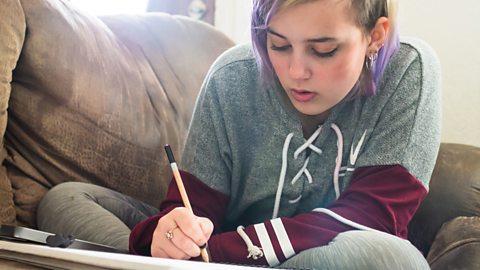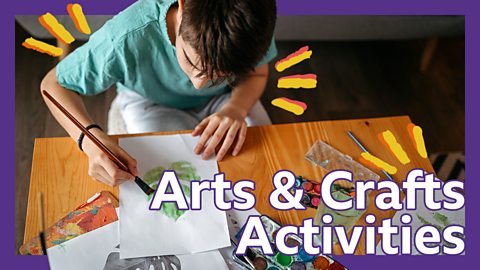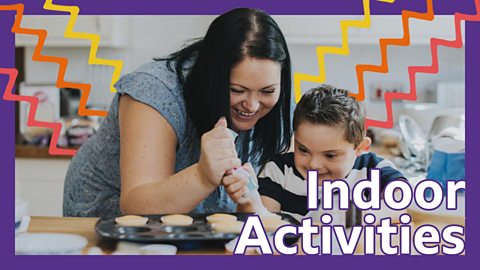Do you love the idea of making art with your kids, but worry your drawing skills aren’t quite up to scratch?
Bestselling author and illustrator Rob Biddulph has been helping families around the world to get creative at home with his ‘Draw with Rob’ series of videos.
So we asked him to share his top tips to help parents and carers be more confident when it comes to drawing with their children.

Meet Rob!
Rob: Hello everybody! My name is Rob Biddulph and I'm a children's author and illustrator. Now then, sitting down to draw alongside your children is one of the most productive and rewarding things that a parent can do. Not only is it a fantastic bonding exercise, but you will also produce lots of great artwork to bring a little bit of colour to your house and you'll also have lots of, you know, ready-made presents to send out to family members and friends, so, you know, it's a win-win. Now, drawing like lots of things in life, is all about confidence. I've learnt in my experience as somebody who goes to lots of different schools and festivals and things like that, that children, they draw quite happily and with abandon until about the age of ten or eleven, at which point, they suddenly start to feel very self-conscious about their work. Maybe somebody in their class is, as they see it, better at drawing than they are, and in their eyes, their efforts pale in comparison. And so from that moment on they see themselves as someone who can't draw. Sometimes we need a little bit of guidance, a little bit of help along the way, and that's where I, and hopefully, later on, you can help. Don't worry if you don't see yourself as an artist. I firmly believe that everyone can draw, you might just need a little bit of help here and there. And while I'm not an art teacher I do have a few tricks up my sleeve that might help. So, here are my top five tips for drawing with your kids.

Tip 1 - Don't be self-conscious
Rob: What's really crucial is that your children see you drawing with confidence and enthusiasm. So, listen, don't be self-conscious or self critical when you're drawing. Instead of getting cross or frustrated if something turns out slightly differently to how you thought it might, you know, just laugh. Show the kids that it's fine if it doesn't all go to plan. If your children see that you're having fun they will have fun too, I promise. And then when you look back at the drawings that you've made together once you've finished, you won't see the lopsided alligator or the out of proportion giraffe, you'll only see the fun that you had when you were drawing these pictures together.

Tip 2 - Don't worry if you make a mistake
Rob: Drawing and art is subjective, it's not a binary thing, there is no right or wrong answer or solution. So, with that in mind if you make a mistake when you're drawing don't screw up your piece of paper and throw it away. Keep on drawing. Draw through the mistakes. In fact, why not make those mistakes part of the picture? I actually find that the bits of a drawing that aren't perfect, are often the bits that give that drawing character. You know, I love it when I see a smudged line, or a wonky circle in a book, you know, when you can see the moment a pencil broke or a pen leaked. Think about the looser painting style of the Impressionists, for example, where, you know, the brush marks and the actual painting processes are much more visible. Personally, I think that those pictures often have more energy and personality than the more polished photo realistic style of say the Renaissance period, for example. You know, positive thinking when drawing is hugely important, so take every mistake as a happy accident. And once your children see that it's fine that a picture doesn't look exactly as it's meant to, they will draw with even more confidence and even more freedom. Listen, if we wanted everything to be perfect we could build a robot to draw for us, and where's the fun in that?

Tip 3 - Use simple shapes
Rob: Now, one of the keys to building confidence is to break a drawing down into its component parts. If you were to put a finished drawing of a panda like this one in front of a child and just tell them to copy it, it might well be quite daunting for them. They might not know where to start. So, that's where we can help. Now, if you break the picture down into a series of simple graphic elements and show your children how to build a drawing from the ground up, it suddenly becomes much more achievable, and trust me this method one hundred percent works. I guarantee that they, and you, will be surprised at the results you get. So, this panda for instance, it might initially look like quite a tricky proposition, but once you break it down, it's very easy to achieve a great result. So I started by drawing ten simple circles, A few of which I coloured in, as you can see. Then I added some simple lines, dots and shapes just to add a bit of detail. Then I drew another eleven circles again, colouring some of them in. Finally, of course I gave our panda a name. Et voila! A simple, but effective drawing.

Tip 4 - Learn a couple of tricks
Rob: As an artist, I'm always on the lookout for new techniques and tricks that I can use to give my drawings that little something extra. And you only really need to have a couple in your arsenal and that can really help add that wow factor to your pictures. I find that simple tricks are the best. So, here are two of my favourites. So, if you're drawing a character and you want to make them look like they're happy for example, the first thing that everybody does, and they're perfectly right to do this, is draw a nice smiley mouth. OK, but to make your character look extra smiley…the real key… It's the eyebrows. If you draw them a long way above your character's eyes, so that they look like they are really raised, your character will immediately start to look super jolly. This is a really, really easy way to take your drawing to that next level and your kids will be amazed at the difference such a simple trick can make. Shadow… Yes! This is the one that in my experience provides the real wow factor, and again, so simple. So, if you want to make it look like the character or the object you've drawn is standing or sitting on a surface, you know, the ground or a table or something. Well, all you've got to do is just add a small amount of horizontal scribble on either side of the item in question, and then if you make that scribble slightly darker the closer you get to the part of the object that is in contact with the surface, it will immediately add another level of depth to your drawing. This is an incredibly simple trick. It's very effective and it's something that you and your children will carry on using in every drawing you do for the rest of your lives, I guarantee it. It's a really good one, so you can have that one for free.

Tip 5 - Display the artwork with pride
Rob: Now, once your drawings are finished, this is very important, you have to find a place at your home to proudly display your child's artwork. Art is made to be seen, and the fact that a grown-up sees the child's picture as something that is worthy of a place on the wall, or maybe even in a frame, it can be so important to that child, it will have a massive impact on their feelings of self-worth and also their sense of place within your family unit. It will make them feel valued and will give their confidence a huge boost. Because, you see, it's all about positive reinforcement, and I really think that such positive reinforcement will percolate through into lots of other areas of their lives. If you provide your child with an environment in which they believe they can contribute and thrive, you know from a creative point of view, then they will take that with them out into the wider world. And you know what? That can only be a good thing, can't it? So, get those pictures up on the fridge, sharpish.

Hopefully these tips will inspire you to get stuck in to drawing more with your children.
You can find more inspiration on making art with your children here.

More from BBC Bitesize Parents' Toolkit…
Parents' Toolkit
Fun activities, real-life stories, wellbeing support and loads of helpful advice - we're here for you and your child.

Five cooking and baking activities to try with your child
Ideas to get your kids in the kitchen, trying new flavours and learning the basics of cooking and baking.
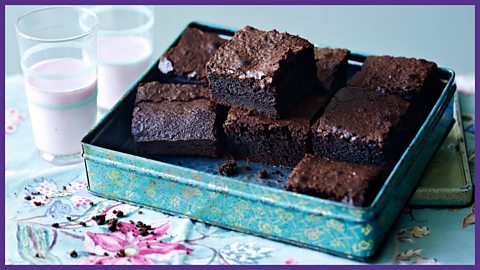
How to make a DIY animal vase with your child
Sophie, aka DIY Blonde, shows how you can help your child to develop a green thumb with a DIY animal vase.
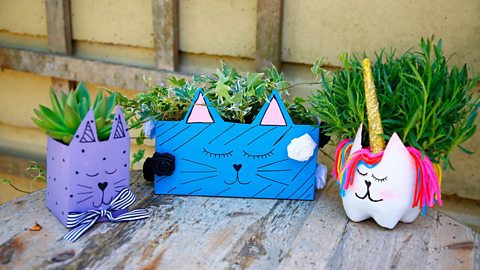
Seven skills a teenager can learn in one month
If your teen wants to shake up their free time, here are seven skills they can try.
